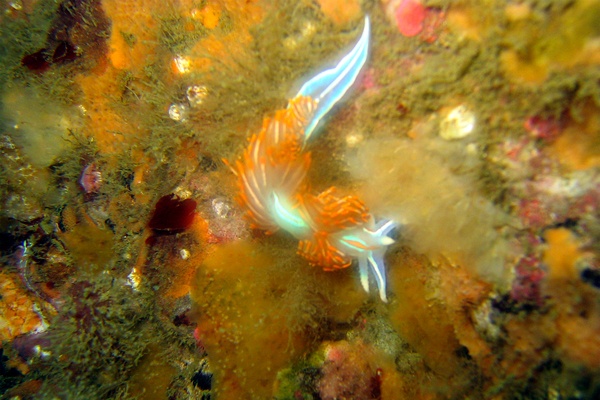When you think of scuba diving, do you picture shiny beaches, bright coral reefs and neon-colored tropical fish? How about cold water, wolf eels and wrecks of the Northwest? Whether you’re a gear-head, adventure nut or tourist, diving in the Northwest guarantees a unique view of an alien world.
Scuba diving allows people to see a completely different world, an ancient place where fascinating and alien lifeforms move between the submarine ruins, rock stacks and kelp beds. While diving can be expensive and time consuming to break into, many divers say that the almost limitless adventure opportunities outweigh the costs, and once you can dive in the Northwest, you can dive anywhere.
To get an idea of the dive possibilities in the Pacific Northwest, I sat down with Howard Cunningham, who owns Strait Scuba and is one of three dive instructors on the north peninsula.
After getting certified in college, Cunningham moved to Florida to work as a dive master for six months. Since returning to the peninsula, Cunningham estimates he’s completed more than 2,500 dives; he also volunteers as a diver at the Seattle Aquarium. While Cunningham says the cooler waters of the Northwest might be a turn-off for new divers, the activity is well worth the effort and there are dozens of dive sites along the peninsula, strait and sound. Among these are Lake Crescent, Neah Bay and Sekiu.
All share their distinct charms as dive sites, from rock gardens to shipwrecks.
Divers in Neah Bay can explore the Tatoosh Island caves and see abalone, urchins and Puget Sound king crab. Neah Bay also is used by the Seattle Aquarium as a collection site, so divers are almost guaranteed to find sea life, whether it’s a Dungeness crab or a school of fish.
One of Cunningham’s particular favorites is what he calls the “catacombs” of Sekiu, where divers can wedge themselves between crags and let the outgoing surf jet them away from the rock formations. It’s the closest Cunningham says he’s come to flying.
Sekiu also houses the renowned Diamond Knot wreck, which Cunningham calls the “holy grail of Northwest dives.” Sunk in 1947, the Diamond Knot has presented a challenging but rewarding dive for divers around the Northwest. Advanced divers with the know-how to navigate the currents will find 130 feet and 60 years of sea life around the hull of the ship, with wolf eels, schools of rockfish and even octopi filling the nooks and halls of the relic.
Getting started
Even though diving is a gear-intensive sport, almost anyone can get into it. I’ve met men and women in their 60s and 70s and seen children as young as 10 or 12 get suited up to dive.
Newcomers can get certified through several different organizations, although PADI — the Professional Association of Diving Instructors — and NAUI — the National Association of Underwater Instructors comprise the largest percentages of divers.
While certifications aren’t legally required to scuba dive, not a single diving professional recommends diving without training and few dive shops will rent equipment without proof of certification. Cunningham operates dive instruction through Strait Scuba and Octopus Garden Diving in Port Townsend also offers classes.
The basic levels of classes get newcomers used to the underwater world and help them cope with dangerous situations. Trainees learn how to handle situations like oxygen regulators failing at depth or water flooding a face mask. “The basic courses will teach you how to not panic,” Cunningham explains. More advanced scuba courses focus on skilled dives and can include training in underwater navigation and photography.
Gearing up
Scuba gear can be rented or bought, and while renting may be less expensive at first, it will quickly add up. Expect to pay around $100 per rental for everything needed, including a wetsuit, buoyancy vest and regulator. “By the time you’ve finished 10 or 13 dives, you could have just bought most of the gear,” Cunningham says. On the other hand, Cunningham notes that investing in equipment can run upwards of $2,500. Instead, it’s possible to keep costs down by purchasing non-life-support equipment (vest, weights, fins and mask) used but saving up to get a new regulator.
Cunningham says that buying used gear is acceptable, but make sure that it’s checked out before purchase for any defects.
The other question when diving in the Northwest is whether to buy a drysuit or wetsuit. While a drysuit will give more dives in the long run, wetsuits cost up to a 10th of the price. On the other hand, diving the Northwest in a wetsuit can be a painful experience, and ultimately, says Cunningham, many divers switch to drysuits after a year or two.
While the cold water can be difficult to get over, northwestern diving provides countless adventures in Washington and along the Oregon coast. Those who learn to dive in the chilly water can take their skills anywhere, such as tropical sandy beaches where they can dive coral reefs in warm water with bright neon fish.



